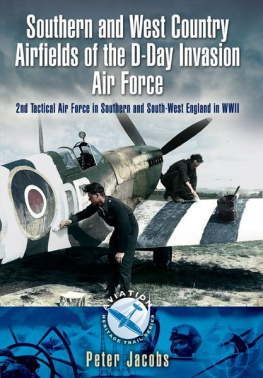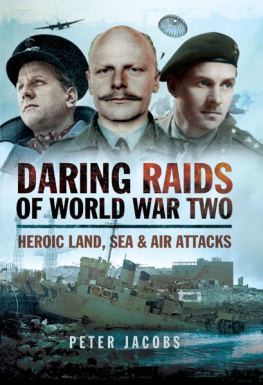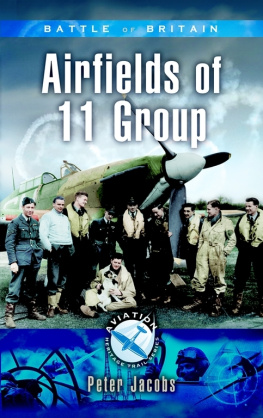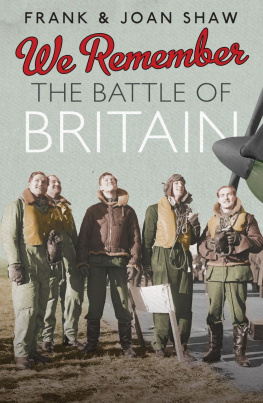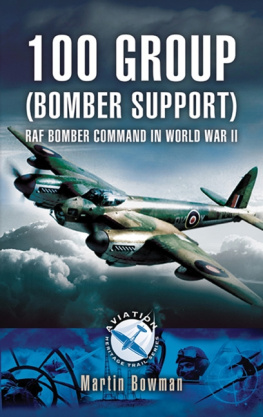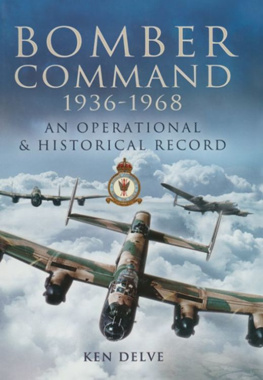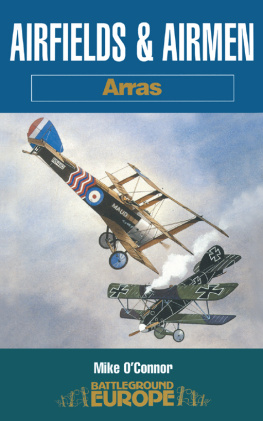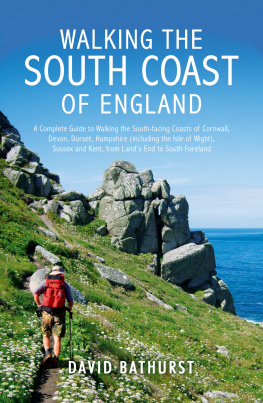
First published in Great Britain in 2013 by
Pen & Sword Aviation
An imprint of Pen & Sword Books Ltd
47 Church Street
Barnsley
South Yorkshire
S70 2AS
Copyright Peter Jacobs 2013
ISBN 978 1 84415 901 7
PDF ISBN: 9781783376292
EPUB ISBN: 9781783376315
PRC ISBN: 9781783376308
The right of Peter Jacobs to be identified as author of this
work has been asserted by him in accordance with the
Copyright, Designs and Patents Act 1988.
A CIP catalogue record for this book is
available from the British Library
All rights reserved. No part of this book may be reproduced
or transmitted in any form or by any means, electronic or
mechanical including photocopying, recording or by any
information storage and retrieval system, without permission
from the Publisher in writing.
Typeset in 10pt Palatino by Mac Style, Driffield, East Yorkshire
Printed and bound in the UK by CPI Group (UK) Ltd,
Croydon, CRO 4YY
Pen & Sword Books Ltd incorporates the Imprints of Pen &
Sword Aviation, Pen & Sword Maritime, Pen & Sword Military,
Wharncliffe Local History, Pen & Sword Select, Pen & Sword
Military Classics, Leo Cooper, Remember When, Seaforth
Publishing and Frontline Publishing
For a complete list of Pen & Sword titles please contact
PEN & SWORD BOOKS LIMITED
47 Church Street, Barnsley, South Yorkshire, S70 2AS, England
E-mail:
Website: www.pen-and-sword.co.uk
Contents
Acknowledgements
T he story of these former wartime airfields could not have been told without the help of so many people. Some I have known and worked with over so many years such as the staffs at the RAF Museum, the Imperial War Museum, the National Archives and, in particular, the Air Historical Branch where I have always been so grateful for the continuous support of the head of the AHB, Seb Cox, and his team. They have all provided me with material and photographs over the years, much of which have helped me with this work and without the help of all these people stories such as this could never be told. In the case of the photographs and illustrations they are either from my own collection or have been included with the kind permission of either the AHB or, in some cases, individuals who have been credited accordingly.
While official sources are essential to military historians and authors alike, I never cease to be amazed by the kindness and help I receive from the local public who help preserve the legacy of these famous airfields, many of whom do so voluntarily. They deserve a personal mention because they all proved so helpful to me, sometimes through prior arrangement but mostly without any notification when they assisted me on the day. They are: Matt Sawday (Appledram); Mick Lambert, Tony Miles and Jo in the admin office at Blackbushe Airport (formerly Hartford Bridge); Phil Manning, Colin Watt and Robert Pollett (Lasham); the owner of the farm at Needs Oar Point who wishes to remain anonymous; Squadron Leader Ian Williamson (Odiham); Haydn Harvey (Thruxton); Mark Gibb and Simon Oliver at Goodwood Flying Club (formerly Westhampnett); Kevin Byrne and Yvonne Durell (Zeals). Thanks to them all.
Those I have mentioned in person are, without doubt, just the tip of the iceberg. Some of the sites I visited have memorials or museums to preserve the legacy of these former airfields or to remember those who served there during the Second World War. These memorials and museums have only been possible because of the vision and generosity of many people over the years and so, on behalf of everyone who appreciates what these people have done, I would like to thank them all.
Finally, but by no means least, I would like to thank Pen and Sword for giving me the opportunity to ensure these airfields are not forgotten and, in particular, to the late Peter Coles who I had the pleasure to work closely with over many years. He will be truly missed.
Introduction
M y interest in old airfields dates back several years and I have been fortunate to be able to tell the brief histories of many of them, and the vital role they played during the Second World War, through this Aviation Heritage Trail Series. My first book on the subject, titled Airfields of 11 Group (published in 2005 and covering the period of the Battle of Britain), was followed in 2009 by Airfields of the D-Day Invasion Air Force, which covered the airfields in south-east England that were used by the 2nd Tactical Air Force (2nd TAF) during the period of the D-Day operations.
This latest work is a second volume on the airfields used by the 2nd TAF during the period of the D-Day operations and covers the twenty-one airfields in the south and south-west of England to add to the twenty-six airfields in the south-east that were covered in the previous volume; the boundary I have used between the two volumes is an imaginary line running south from Guildford to just east of Bognor Regis and so this book covers everything to the west of that line, from west Sussex to Cornwall.
Several airfields used by the 2nd TAF were only temporary and were designated as advanced landing grounds (ALGs) rather than given full airfield status. They had been identified as early as 1942 and were only to support the vast number of 2nd TAF squadrons, as well as American squadrons of the US Ninth Air Force, for a limited period during the build-up to the Allied invasion of Europe and immediately after. Each landing ground was constructed to a similar pattern with two metal track runways, a perimeter track and aircraft standings with a number of hangars and a facility for storing fuel.
Not all airfields used by the 2nd TAF during 194344 were involved in air operations over Normandy on D-Day they were too far west and out of operational range of the invasion beaches but all were used at one time during the period and so are included for completion; I have not, however, included those airfields or landing grounds that were used solely by the US Ninth Air Force during this period.
Some of these former wartime airfields and landing grounds, such as Hurn and Odiham, need little introduction. Hurn, for example, is now Bournemouth Airport and Odiham is one of the RAFs main operating bases and home to the Chinook helicopter. Some names are probably better known because of their coastal location Bognor Regis, Lee-on-Solent, Perranporth and Selsey where even many of the locals will not be aware that an airfield once existed. Other former airfields will be associated with other activities and these will include: Beaulieu (now a motor museum); Ford (as a prison); Thruxton (for its motor racing) and Westhampnett (now the Goodwood motor racing complex). Others will be unheard of other than to the most avid aviation historian or to those who have lived there; in this category I would include Appledram, Ibsley, Funtington, Needs Oar Point and Zeals.
To put the story about the airfields into some context, I have started the book with a brief insight into the 2nd TAF and the period covering the air operations in support of D-Day before looking at the airfields region by region. For each airfield I have given its brief history leading up to the period when the airfield was used by the 2nd TAF and then provided some brief exerts of what happened at the airfield immediately before, during and after D-Day. These often include mentions of just some of the gallant airmen who served at the airfield during the period, some of whom were highly decorated, and I have used the appropriate abbreviation when referring to their awards; DSO is the Distinguished Service Order, DFC the Distinguished Flying Cross and the Distinguished Flying Medal is abbreviated as DFM. At the end of each airfield I have provided a brief summary of the squadrons and aircraft types that served from the site during the period of interest.
Next page
